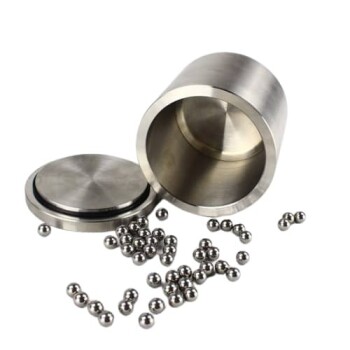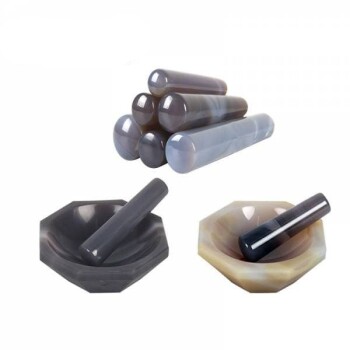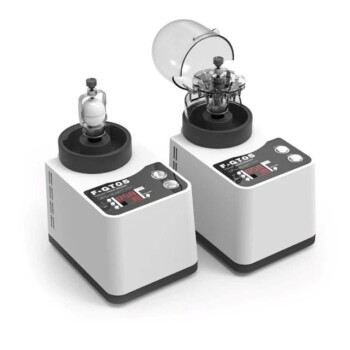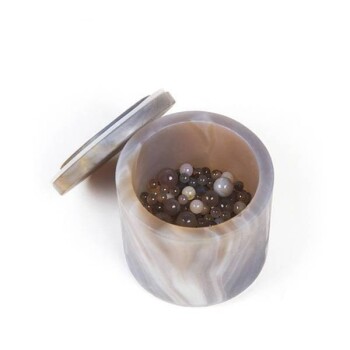A laboratory grinder is a common type of laboratory grinding equipment used to grind, crush, or homogenize a variety of materials. These mills come in different forms such as ball mills, rod mills or bead mills and are used for tasks such as sample preparation, particle size reduction or material mixing. and laboratory grinders or pulverizers. These machines are designed to crush solid materials into fine powders or granules for further analysis or experiments. They are frequently used in fields such as chemistry, materials science, pharmaceuticals and biology.
Toggle Categories
Shortcut
Chat with us for quick and direct communication.
Immediately reply on working days (within 8 hours on holidays)
milling equipment

Metal Alloy Grinding Jar With Balls
Item Number : GJ-1

Alumina/zirconia Grinding Jar With Balls
Item Number : AG-2

Nature Agate Mortar With Pestle
Item Number : AM-1
Laboratory mills are typically smaller in size, but they offer similar functionality with a focus on precision, accuracy, and reproducibility. They often have features such as adjustable speed controls, digital displays and safety measures to ensure controlled and safe operation.
The applications of grinding equipment are diverse and span various scientific disciplines. They are used in research laboratories, quality control laboratories, educational institutions and other scientific environments. These tools enable scientists, researchers, and technicians to study and manipulate materials, analyze their properties, and develop new products or processes.
To sum up, laboratory milling equipment plays a vital role in scientific research and analysis. They provide the necessary tools and capabilities for precise material processing, particle size reduction and preparation. Laboratory grinding equipment, with its controlled and accurate performance, enables researchers to conduct experiments, collect data, and improve their understanding of various scientific fields.
FAQ
What is milling equipment used for?
What are the different types of milling equipment?
What materials can be processed using milling equipment?
How does milling equipment work?
What are the advantages of using milling equipment?
What factors should be considered when selecting milling equipment?
REQUEST A QUOTE
Our professional team will reply to you within one business day. Please feel free to contact us!
Related Articles

Key Features of the Micro Tissue Grinder: Usage, Advantages, and Applications
Discover the key features of the Micro Tissue Grinder, including usage instructions, advantages, and application fields. Learn the principles and structure of the Micro Tissue Grinder, and explore its benefits in sample preparation and industrial settings.

Planetary Ball Mills: Research Tools for Efficient Mixing and Nanoscale Grinding
Planetary ball mills are indispensable tools in modern laboratories, serving a crucial role in the mixing, fine grinding, and preparation of small samples. These mills are particularly adept at dispersing nanomaterials and facilitating the development and small-scale production of high-tech materials.

Advantages of Planetary Ball Mill in Laboratory Applications
Discover the advantages of using planetary ball mills in laboratory settings. Learn about its ability to produce fine powder, suitability for toxic materials, wide range of applications, continuous operation, and usage for milling abrasive materials. Explore how planetary ball mills differ from traditional milling machines and their function in creating ultrafine and nano-sized materials.

Maximizing Grinding Efficiency: The Power of Planetary Ball Mills
Discover why planetary ball mills offer higher grinding efficiency than ordinary ball mills. Learn about the technology behind their high-performance all-round capabilities. Find out the key factors influencing the productivity and specific energy consumption of ball mills.

Choosing the Best Material for Ball Mill: Essential Factors and Recommendations
Discover the best material for ball mill applications and grinding success. Learn about the features and benefits of stainless steel, ceramic, agate, and tungsten carbide media. Find out how to ensure grinding success and the ideal grinding jars and media for planetary ball milling. Explore the applications of ball mills and the advantages of high-energy ball mills for ultra-fine particles.

Understanding the Advantages and Disadvantages of Ball Mills in Laboratory and Industrial Applications
Discover the pros and cons of using ball mills for grinding materials. Explore the potential applications of ball mills for various industries.

Working Principle of Vertical Ball Mill : Impact, Attrition, and Size Reduction
Discover the working principle of vertical ball mills through impact and attrition mechanisms. Learn how materials like iron ore and ceramics are ground to a fine medium. Explore the construction, operations, advantages of vertical mills in this detailed guide.

The Advantages of Ball Milling in Laboratory Applications: high capacity and reliability
Discover the numerous advantages of ball milling in laboratory applications. Explore the working principles, applications, and advantages of ball mills, along with the impact of ball mill speed on size reduction. Learn how ball milling compares to traditional milling machines.

Disc / Cup Vibratory Mill: A Comprehensive Guide to Its Functions and Applications
Discover the world of Disc / Cup Vibratory Mills with our in-depth guide. Learn about their working principles, applications, advantages, and key features. Explore the various types of vibratory mills and their suitability for different industries.

Disc / Cup Vibratory Mill: A Comprehensive Guide for Laboratory Experts
Discover the world of Disc / Cup Vibratory Mills! This comprehensive guide provides an in-depth understanding of their types, working principles, advantages, and applications in various industries, including pharmaceuticals, chemicals, and food processing.

Disc / Cup Vibratory Mill: A Comprehensive Guide to Grinding Equipment
Discover the world of Disc / Cup Vibratory Mills! This guide covers everything from types and features to applications and benefits. Explore the versatility of these mills for grinding various materials in industries like pharmaceuticals, food, and chemicals.

Features of Different Laboratory Mills: An Overview
Laboratory mills are specialized machines used to reduce non-homogenous batch samples into smaller, representative samples that are more uniform in composition.


